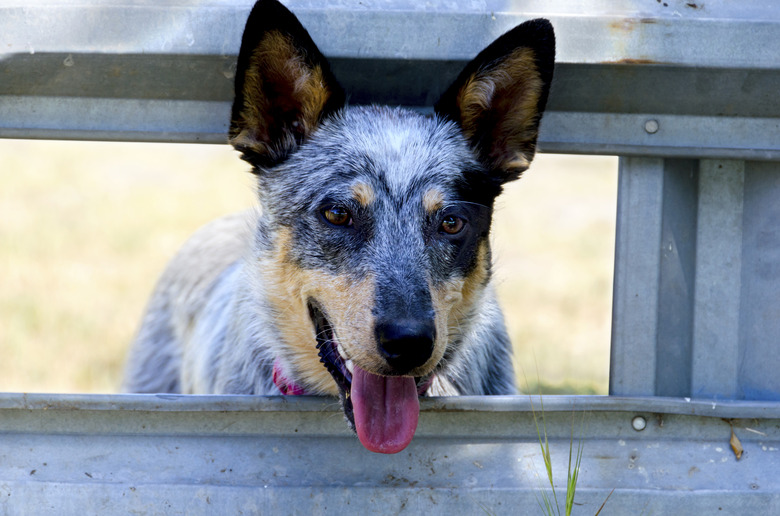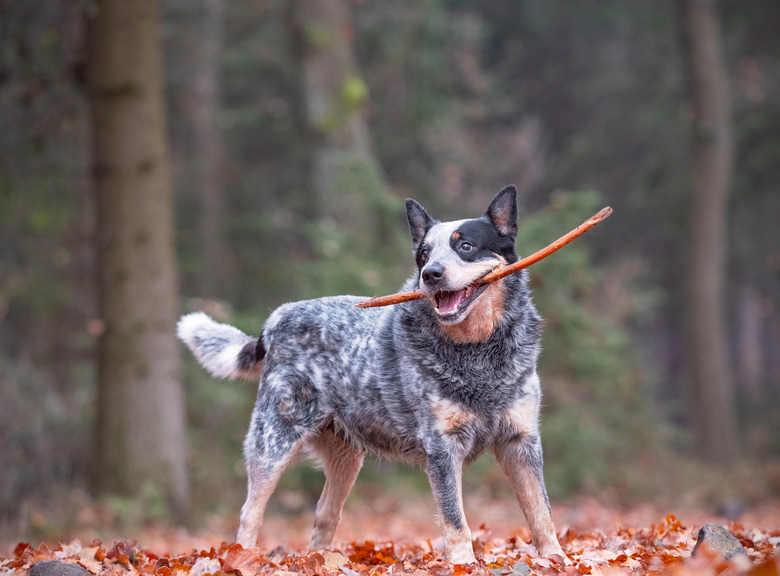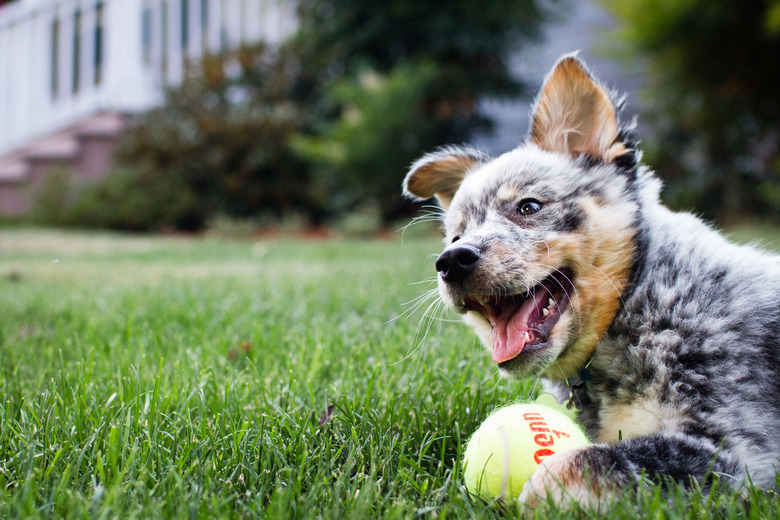How To Care For A Blue Heeler
Caring for a blue heeler requires more time, energy, and commitment than the average dog. The blue heeler isn't a breed per se, but one of the two colors permitted for an Australian cattle dog. The other shade is red, and there's no difference between the blue and red heeler other than coat color. This tough working breed is also known as the Queensland heeler.
Understanding your cattle dog
Understanding your cattle dog
If you're bringing a blue heeler into your life, you must understand what these dogs were bred to do. Down Under, they spent their days herding cattle in some of the harshest terrain on earth. These smart canines, with some dingo ancestry, worked both in conjunction with cattlemen and independently. According to the American Kennel Club, blue heelers are high energy dogs and need a job to remain happy. Without a job of some kind, your blue heeler will take his immense energy and put it toward unacceptable uses — such as canine home demolition.
The blue heeler isn't the dog for everyone, and is an especially bad choice for the novice dog owner. For the experienced canine aficionado who understands working dogs and their need for human leadership, he makes a terrific partner and companion.
Provide positive reinforcement in training
Provide positive reinforcement in training
Since the blue heeler is exceptionally bright, he takes easily to training. Your blue heeler puppy should learn the basics of housetraining without fuss. Because he needs a good base, take him to obedience classes, starting with puppy kindergarten. He responds best to positive reinforcement, which can include treats when he does what's expected. Because it's his instinct to herd, make sure to nip any such behavior directed at kids in the bud. Socialize your puppy as much as possible. He's territorial by nature, and must learn to accept other dogs and people.
Provide lots of exercise
Provide lots of exercise
An exhausted cattle dog is a good cattle dog, according to the Australian Cattle Dog Rescue Association, which works to rehome blue heelers whose prior owners might not have the knowledge or time to devote to these active animals. These dogs need lots of physical movement. If you run or bike, have your blue heeler accompany you on a leash. Take long hikes with him, or practice and compete in agility, rally, flyball, or other canine sports.
Australian cattle dog grooming
Australian cattle dog grooming
Australian cattle dog grooming is easy, so you won't have to spend much time grooming your blue heeler. He sports a short, but double, coat designed to resist water and dirt. He does shed, so you'll need to give him a quick brushing once or twice weekly. His undercoat blows semi-annually, but it isn't the overwhelming hair event experienced by owners of long-haired canines. It just means you'll have to brush him more often during that period, using a dog brush "rake" to get rid of the undercoat. Your blue heeler won't require bathing unless he's filthy.
Health issues with cattle dog breeds
Health issues with cattle dog breeds
Australian cattle dog breeds are relatively healthy, with only a few common genetic conditions. Eye issues are somewhat prevalent, including progressive retinal atrophy — which eventually results in total blindness — and primary lens luxation. Deafness and certain orthopedic problems also occur. The latter include slipped kneecaps and hip or elbow dysplasia. Before purchasing a puppy, ask the breeder to produce certification on the parent's eyes, hearing ability, and physical soundness from the Canine Health Information Center. The national breed club, the Australian Cattle Dog Club of America, participates in the CHIC program.


